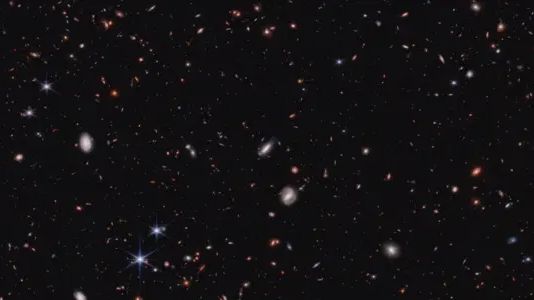exchemist
Valued Senior Member
Does MOND bugger up general relativity, as well as Newtonian gravitation? Big G, or a constant equivalent to it, appears in GR, if I’m not mistaken.It looks like MOND is back on the menu, boys!

James Webb Space Telescope finds galaxies pointing toward a dark matter alternative
"The bottom line is, 'I told you so.'"www.space.com
